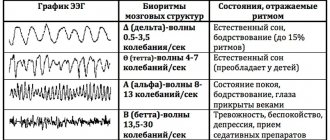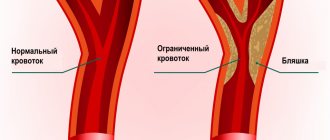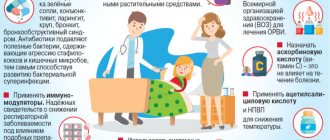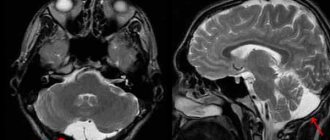The bone marrow transplant procedure involves the manipulation of transplantation of stem (blood-forming) cells into a patient, which can be obtained by three basic methods:
- from umbilical cord blood;
- from peripheral blood through its special treatment using hemodialysis and apheresis;
- actually from the donor's bone marrow.
The technique bears the general name “bone marrow transplantation” solely for the reason that the first experiments were carried out specifically with obtaining cells from the cavity of the donor’s pelvic bones. Nowadays, the method of obtaining hematopoietic material from peripheral blood is also actively used, as the simplest method that does not cause discomfort to the donor.
Indications for hematopoietic stem cell transplantation are:
- malignant blood diseases - lymphoma, leukemia;
- oncology of other organs and tissues;
- aplastic anemia;
- hereditary pathologies that occur with disruption of blood formation processes.
For experimental purposes, bone marrow transplantation is carried out abroad for autoimmune and cardiovascular diseases. The technique has shown high results in the treatment of rheumatism, multiple sclerosis and psoriasis.
The most difficult issue in transplantation remains the selection of a donor. The likelihood of developing complications increases in proportion to the foreignness of the cells introduced into the recipient’s body, so close relatives become the most suitable for this role. The probability of antigenic compatibility of brothers and sisters reaches 25%. If there are no suitable donors in the family, a database search is conducted.
Almost every country in the world has collected information about people who want to give cancer patients a chance and become a stem cell donor for them. To get into the clinical base, a person donates blood. In the laboratory, it is subjected to research to determine the antigenic set of leukocyte proteins. It is by comparing the two sets – donor and recipient – that their histological compatibility is determined.
The widest choice of donors is available in Germany, where more than 5,000 people have undergone HLA typing (determination of the antigen set)
Bone marrow transplantation - what is it?
Bone marrow transplantation (BMT) is a procedure for implanting healthy hematopoietic cells into the patient’s body in order to resume the process of hematopoiesis.
Indications for transplantation:
- Anemia
- All types of leukemia
- Myeloma
- Certain cancers (for example, testicular cancer)
- Hodgkin's disease
- Non-Hodgkin's lymphomas
Contraindications for transplantation:
- Severe pathologies of the liver and kidneys
- Infectious diseases
- Pregnancy
- Physical weakness of the body (old age, concomitant diseases)
Bone marrow transplantation for children is performed according to the same indications and contraindications as for adult patients.
Hodgkin's disease
In 10-30% of patients with advanced stages of Hodgkin's disease, primary chemotherapy is ineffective, and in 40% of patients the disease relapses. The results of treatment of patients who are insensitive to primary chemotherapy and with the first early relapse (within the first year) are unsatisfactory.
The use of other standard chemotherapy regimens allows achieving complete remissions in no more than 40-45% of patients, however, remissions are short and survival rate is low.
The use of high-dose chemotherapy in combination with autologous stem cell transplantation makes it possible to almost double the rate of complete remissions, and therefore the hope of increasing survival.
What types of transplants are there?
It is customary to distinguish between the following types of bone marrow transplantation:
- Autologous transplantation is an operation in which the patient is implanted with his own cells.
- Allogeneic transplantation from a relative
- Allogeneic transplant from an unrelated donor
- Haploidentical transplantation is a type of transplant that uses the bone marrow of a partially compatible relative. Graft survival after this procedure occurs in only 25% of patients
Acute non-lymphoblastic leukemia (ANLL)
The use of standard chemotherapy in the first complete remission allows long-term survival to be achieved in 25-35% of cases, compared to 45-60% when using allogeneic stem cell transplantation. The use of transplantation in the second remission is accompanied by long-term remission only in 20-30% of cases.
The use of allogeneic stem cell transplantation with primary resistant (treatment-resistant) ONLL allows achieving long-term remission in 10-20% of cases.
How do you prepare for transplantation?
Preparing the patient for transplant
The most important stage of preparation for transplantation is conditioning. This is a therapy used for cancer. It consists of taking chemotherapy drugs and immunosuppressants. This suppresses the patient’s immunity to prevent rejection of the transplanted material. The method also helps destroy cancer cells and frees up space for the transplant.
In the case of transplantation of one's own cells, a collection is first made, and then the material is frozen until the end of the chemotherapy course.
Diagnostic procedures before bone marrow transplant surgery:
- Consultations with specialists, incl. dentist
- MRI and CT, PET-CT (if we are talking about cancer)A
- blood test (including for HIV, hepatitis, etc.)
- A biochemical blood test is performed to ensure that the liver and kidneys are functioning properly. Otherwise, transplantation may be contraindicated
- Trephine biopsy and bone marrow aspiration. This is a puncture of bone tissue and bone marrow followed by cytogenetic analysis
If necessary, the patient undergoes treatment at the dentist. This is necessary to completely eliminate infections, since after transplantation their presence is deadly.
Preparing for donation
The donor undergoes routine testing to rule out any diseases that could be passed on to the recipient.
If the sample is taken from peripheral blood, the donor is prescribed special medications that must be taken for 5 days. They promote the active release of cells into the bloodstream.
There may be side effects from taking these medications. Usually these are short-term bone pains.
Discharge from hospital
Preparing to return home
The actual discharge process begins several weeks before the stem cell transplant. First, specialists tell the patient and caregiver about the following nuances:
- necessary precautions;
- designation of a person caring for the patient; requirements for such a person; selection of a substitute guardian who will be responsible for the care of the patient in the event of illness of the first guardian;
- home preparation;
- rules for caring for a central venous catheter;
- rules for caring for the oral cavity and teeth;
- which foods can be eaten and which cannot;
- permitted and prohibited activities;
- in what cases should you call doctors from the transplant team or other specialists.
What are the criteria for discharge from hospital?
In most cases, transplant centers will not discharge patients home until they meet the following criteria:
- normal body temperature during the last 48 hours;
- ability to take pills and other medications without vomiting for the past 48 hours;
- the ability to control nausea, vomiting and diarrhea with drug therapy;
- neutrophil level (absolute neutrophil count, or ANC) not less than 500-1000/mm3;
- hematocrit not less than 25-30%;
- platelet level not less than 15,000-20,000/mm3;
- the presence of an assistant in the home, support from relatives and a safe home environment.
If you do not meet all of these requirements, but also do not require intensive care in the transplant department, you will be transferred to the oncology department. After discharge, it is necessary to live a little near the transplant center in order to receive timely qualified assistance in case of complications.
How is transplantation performed?
Stage 1. Fence
Bone marrow is collected under general anesthesia. First, the doctor makes a small incision and then uses a wide needle to puncture material from the femur.
The donor can also choose to collect cells from peripheral blood. To do this, the donor is connected to a machine that pumps blood for several hours. Through a special separator, bone marrow cells are separated from the blood and collected in a separate reservoir.
Stage 2. Transfer
Bone marrow is transplanted by intravenous injection. The procedure lasts up to 2 hours.
Stage 3. Engraftment period
The injected cells eventually take root and begin to produce new healthy blood cells.
Hospitalization lasts about 3 months.
Send a request for treatment
Who can become a donor for a bone marrow transplant?
The related donor can be the patient's sibling. However, even such a donor is not always compatible. In rare cases, a haploidentical transplant is performed. The donor can be the patient's father or mother.
For an unrelated transplant, candidate selection occurs through the bone marrow donor bank database. The search usually takes about 2 weeks. The largest are the US Bone Marrow Donor Bank, European and German banks. Usually 2-3 people are selected, since a potential candidate may have temporary contraindications, refuse the procedure, or may not be in the country.
It is worth noting that there are times when it is not possible to find a suitable candidate.
Contraindications to donation are:
- Infectious diseases
- Autoimmune diseases
- Mental disorders
- Age under 18 and over 55 years old
What complications can there be after the procedure?
The most serious complications after bone marrow transplantation are rejection of the graft by the body and attack of the transplanted cells on the patient's body (graft-versus-host disease). To prevent both of these reactions, the patient is prescribed immunosuppressants - drugs that suppress the immune system.
Such therapy, in turn, exposes the patient’s body to the risk of infection. In order to minimize this risk, the patient is placed in a sterile box. This is an isolated sterile room equipped with antibacterial filters.
There is no risk of complications for the donor during a bone marrow transplant. However, there are minor side effects. Possible feelings of weakness and nausea. Hospitalization of the donor lasts one day. Pain at the puncture site disappears after a few days. The donor's bone marrow cell volume is restored after 2 weeks.
The consequences of transplantation for the patient depend on a number of factors:
- Initial diagnosis
- Levels of donor compatibility
- Relative physical health
- Compliance with the isolation regime during the engraftment period
- Competent treatment protocol
If all the necessary precautions are followed and the treatment is carried out in a well-equipped center under the guidance of an experienced doctor, the chances of recovery are high. This also applies to patients with malignant diseases.
How does a bone marrow transplant occur in Israel?
Where do you get the material for transplantation? Bone marrow is present in the body of any person, therefore - purely theoretically - anyone can become a bone marrow donor.
But the reality is that transplanted foreign tissues are rejected by the body. To prevent rejection of the transplanted bone marrow cells, they must be compatible with the body of the recipient (the person receiving the transplant). The chance of compatibility is much higher among blood relatives, so it is they - and not strangers - who are preferable as donors. Depending on the source of donor material, transplantations are divided into:
- allogeneic - from a foreign donor. In this case, the donor can be a close or distant relative, as well as a stranger compatible with the recipient
- isogenic - from an identical twin, genetically identical to the recipient
- autologous - material for transplantation is obtained from the patient in advance and stored under special conditions
Are there any restrictions or contraindications to bone marrow transplantation? One of the biggest limitations making transplantation difficult is the lack of a suitable bone marrow donor. In Israel, there is a program for registering potential donors, but the chance of finding a compatible donor among strangers is small. Most often, the material for transplantation is obtained from the patient himself or, if possible, from his close relatives.
There are a number of contraindications to both donation and the bone marrow transplantation procedure (for example, the presence of autoimmune or infectious diseases in the donor). In any case, before the procedure for collecting material for transplantation, the donor undergoes a comprehensive medical examination.
Due to the high risk of complications, transplantation is not recommended for very weak and elderly people, as well as for patients with severe diseases of internal organs.
How is the bone marrow collection procedure performed? When it comes to autologous transplantation, bone marrow is obtained from the patient himself. During a bone marrow transplant for leukemia, the collection is performed before undergoing a course of radiotherapy or chemotherapy. If necessary, the material is purified to exclude the presence of cancer cells. It is then frozen and stored until transplantation.
The procedure for obtaining bone marrow does not depend on the type of transplantation, that is, on whether the donor is the patient himself or a stranger. The procedure is usually performed under general anesthesia in an operating room. A thick needle is inserted into the femur or pelvic bone, through which a small amount of bone marrow, which has a semi-liquid consistency, is pumped into a syringe. As a rule, several punctures are performed to obtain a sufficient amount of material.
How does a person feel after the bone marrow harvesting procedure? After waking up from anesthesia, moderate pain is possible. Usually the pain is aching, like a bruise, and responds well to analgesics (painkillers). There are no stitches or scars left after the procedure.
In the evening after the procedure or the next day, the donor is discharged from the hospital.
Since only 2-5% of the bone marrow is taken, its deficiency is not felt in any way by the person and is replenished by the body within several weeks.
What does preparing a patient for transplantation include? Before the transplant procedure, the patient undergoes a series of medical tests to assess his general health and weigh the risks associated with the transplant.
A few days before the transplant, the patient is hospitalized. In a hospital setting, he receives a course of intensive chemotherapy or radiotherapy, which deliberately destroys the cells of his own bone marrow. Only after the patient's bone marrow has undergone total destruction can a transplant be performed.
It is important to emphasize that in this case we are talking about chemotherapy and/or radiotherapy in high doses. This treatment is accompanied by a number of side effects (nausea, vomiting, weakness, irritability, etc.). To relieve these symptoms, appropriate treatment is prescribed.
At the end of intensive therapy, the patient’s body is not capable of hematopoiesis and is defenseless against infections. Therefore, the Bone Marrow Transplant Unit follows strict safety procedures to minimize the risk of infection.
How is a bone marrow transplant performed? The bone marrow transplant procedure is similar to a blood transfusion. Donor bone marrow is injected intravenously. The patient is in his own room, and not in the operating room. Medical staff closely monitors the general condition of the patient.
How does the patient feel after the transplant? The general condition of the patient after bone marrow transplantation can be described as serious. The most critical are the first 2-4 weeks after transplantation, when the patient’s own bone marrow is not functioning and the transplanted cells have not yet taken root. In addition, chemotherapy undermines the body's defenses and is accompanied by severe side effects. Patients experience extremely severe weakness, nausea and vomiting; Digestive disorders, fever and chills, and ulceration of the oral mucosa may also occur. These symptoms last quite a long time and have a wave-like character: they sometimes intensify and then weaken.
Due to a sharp decrease in platelet levels, blood clotting is impaired and bleeding occurs. To reduce the risk of bleeding, platelet transfusions are prescribed. To prevent infections, the patient is given antibiotics. The patient also takes medications to prevent the body from rejecting donor bone marrow.
It should be remembered that we are talking about complex treatment, accompanied by serious adverse reactions, which cannot always be prevented.
What precautions should be taken for a patient undergoing bone marrow transplantation? As noted earlier, after a bone marrow transplant, the patient is practically defenseless against infections. Therefore, a strict regimen for the prevention of infectious diseases is observed in transplant departments. In essence, the patient is in conditions of strict isolation designed to minimize contact with bacteria, viruses, pathogenic fungi and other microorganisms. For this reason, it is prohibited to bring gifts, flowers, or clothes from home to the patient. Visitors and staff must wash their hands thoroughly before contacting the patient and use protective equipment: wear a gown, mask and gloves. The same means should be used by the patient if he leaves the hospital ward.
The medical staff at the Bone Marrow Transplant Unit will give you detailed and clear instructions about patient precautions.
How long does hospitalization last? The most difficult period lasts 2-4 weeks. Then, if the transplantation was successful, the gradual engraftment of the bone marrow begins and the restoration of its functional ability. Blood test results are improving, and the patient’s general condition is stabilizing. The severity of the symptoms weakens, but they do not disappear completely and tend to suddenly worsen. Gradually, the patient is transferred to a more gentle regimen and the doses of medications are reduced.
If the process proceeds without complications, the duration of hospitalization is 1-2 months.
What psychological problems may a patient experience after a bone marrow transplant? The first thing to remember is that your friend or relative who is undergoing a transplant realizes that he is sick and the chances of a cure are not very good. Bone marrow transplantation is a dangerous and difficult procedure that does not provide a 100% guarantee of a successful outcome. It is important to maintain a positive attitude in the patient, which helps to overcome the difficult recovery period.
One of the side effects of medications is irritability, fatigue and weakness. Patients often complain of a constant lack of strength, feel helpless and dependent on others. The simplest actions suddenly become difficult to perform, and this can cause anger and irritation.
Conditions of isolation create an atmosphere of loneliness and lack of support, precisely at a time when it is truly needed. Wave-like symptoms, in which there is improvement and then worsening again, exhausts the patient and leads to a feeling of hopelessness.
Treatment of children is especially difficult. Despite the fact that qualified medical personnel use special techniques to minimize pain, children have a hard time with the procedures and complications that accompany transplantation. It is also especially difficult for children in isolation, although most hospital wards are designed to recreate the atmosphere of home as much as possible.
All bone marrow transplant departments in Israel employ professional psychologists who will help the patient and his loved ones cope with emotional stress. Do not hesitate to seek help from specialists and do not try to solve your problems alone.
Stem cell transplantation in Israel What is the difference between bone marrow transplantation and stem cell transplantation?
Stem cell transplants are widely used in Israel, a procedure that replaces traditional bone marrow transplants. As you know, the bone marrow contains stem cells - the universal precursors of all blood cells. After entering the recipient's body, the stem cells engraft and begin to produce functional blood cells (erythrocytes, leukocytes and platelets). To obtain stem cells, there is no need for a puncture, since a small number of them are present in the peripheral blood. The source of stem cells can be either the patient himself or a compatible third-party donor.
To artificially increase the content of stem cells in a donor, he is prescribed in advance a course of injections of drugs that stimulate the bone marrow to actively produce stem cells. Stem cells are taken from peripheral blood using a special device - a cell separator, which is connected to the donor's circulatory system through one of the veins. The blood enters the machine, the stem cells are filtered out and stored. The blood passing through the cell separator is continuously infused through another vein into the donor's body.
The stem cell collection procedure is painless and does not require anesthesia. Only slight discomfort and minor pain are possible during the period of taking drugs that stimulate the growth of stem cells in the bone marrow.
The process of preparing for a stem cell transplant to a recipient, the transplantation procedure itself and the subsequent recovery period are not fundamentally different from a bone marrow transplant.
How to behave after being discharged from the hospital? The recovery period lasts much longer than hospitalization. The patient must remain under constant close supervision by medical personnel for several months. He also continues to receive fairly intensive treatment, such as anti-rejection drugs and blood transfusions. It is necessary to regularly (several times a week) visit the medical center where the transplant was performed and perform preventive examinations.
During the recovery period, the patient continues to experience weakness. He has difficulty performing normal activities and needs help from others. It will take about six months to return to work or school, and in general the rehabilitation process takes a year.
Precautions to prevent infections are still needed. At the slightest sign of the development of an infectious disease, you must immediately arrive at the medical center.
Patients coming to Israel from abroad for a bone marrow transplant will need to rent temporary housing in close proximity to the medical center.
What is the cost of a bone marrow transplant in Israel? Bone marrow transplantation is an expensive procedure, the final price of which may not be easy to determine in advance. Much depends on the patient’s health status, stage of the disease, the presence of complications during chemotherapy and after transplantation, etc.
The procedure is made cheaper by having a related donor or using stem cells obtained from the patient himself.
Consideration should be given to the need for additional medications, medical tests and blood transfusions that may be required if complications develop.
Preparatory stage Preparatory stage (includes medical examination of the patient) $10,000-15,000
Chemotherapy The number of sessions required cannot be determined in advance.
The price of one course of chemotherapy is from $10,000
Donor selection If we are talking about an unrelated donor, then the cost of searching depends on the hospital base and can vary greatly. For example, in the largest donor bank the cost of searching, examining and hospitalizing a donor starts from $50,000
Blood products and expensive medications The price of blood products and additional medications depends on the individual characteristics of the patient and can reach $25,000-40,000
Total cost of bone marrow transplant (including hospitalization) Price of allogeneic bone marrow transplant (from an unrelated donor) from $220,000.
The price of an autogenous (from a relative) bone marrow transplant starts at $130,000.
To get more detailed information about each bone marrow transplant center and choose the best option, contact the staff of the Israel Cancer Center.
How to resolve issues with organizing a trip to us for treatment
The patient will only need medical documents or an extract from them on this disease, which can be prepared in Russian. You send them to our email: [email protected]
We translate them into Hebrew, leading specialists hold a consultation in absentia on them, and after a few days you receive an answer. Where is the list of medical treatments that we offer, what length of stay is required, accommodation conditions, cost of medical treatments, accommodation, transfer and other organizational issues?
We have a special department that deals with organizational issues: meeting at the airport, transfer, ordering accommodation, accompaniment of an interpreter at all stages of treatment and diagnosis, excursion services.
We also have our own housing stock: these are fully equipped 2-3 room apartments. The apartments have everything: TV with satellite TV and Russian channels, washing machine, refrigerator, air conditioning, equipped kitchen, internet
Typically, staying in apartments is cheaper than staying in hotels.
Our patients are provided with the following free of charge:
- accompanied by an interpreter in the medical center.
- transfer place of residence - medical center - place of residence
- mobile phone and local SIM card
- translation into Russian of medical documents received in Israel
Payment methods: no prepayment required, because... Payment for the medical program is made during the implementation of the program to the center’s accounting department.
Payment methods: cash (US dollars, Euros, Israeli shekels), credit card, bank transfer.
Control after treatment (after departure)
After treatment, the patient leaves with documents that are translated into any of the languages she chooses. But we do not say goodbye to the patient - we continue to monitor his health. To do this, she maintains contact with our specialists, with whom she can contact on any issue regarding restoration and receive the necessary recommendations.
READ ALSO:
- PREPARATION FOR A TRIP TO ISRAEL FOR TREATMENT
DO YOU HAVE ANY QUESTIONS? In this case, our doctor, who speaks Russian, can call you and conduct a consultation, as well as answer questions about treatment and diagnosis in Israel. This service is free.
How is rehabilitation after blood-forming cell transplantation?
Conclusions about the success of the transplant can only be made after several weeks after the operation. During this time, the transplant takes root in the patient's body. During the period of graft engraftment, the patient is prescribed maintenance therapy in the form of antiviral and antifungal drugs, as well as antibiotics.
A bone marrow transplant requires recovery not only physical, but also psychological. The patient experiences severe weakness for a long time. This condition affects his mental well-being, so it is extremely important to receive professional help from a psychologist during this period. It is also necessary for the patient's family to support him during this time.
Life after bone marrow transplant
The life of transplant patients is not much different from the everyday life of an ordinary person. For some time it is necessary to follow the doctor’s instructions, but this does not significantly affect the quality of life.
What is the prognosis for life after transplantation?
Survival after bone marrow transplantation depends primarily on the initial diagnosis. Also, the experience of the oncohematologist who transplants the cells is important. Thus, in German and Turkish clinics, the average survival rate of patients after transplantation is more than 90%.
It is impossible to determine the life expectancy after a bone marrow transplant, since this indicator depends on many factors. A person is considered completely cured after surviving 5 years after the procedure.
Relapse after bone marrow transplant
There is a possibility of relapse after a bone marrow transplant. This figure varies significantly depending on the clinic where the procedure is performed. Thus, in foreign bone marrow transplant centers, the statistics of relapse are much lower than the same indicator in CIS clinics.
The more time has passed since the transplant, the lower the likelihood of relapse. If the disease returns, the transplant is repeated. The risk of disease-free survival after a second transplant depends on the time interval between the first transplant and the first relapse. If this period lasted more than a year, the chances of recovery are high.
Chronic myeloid leukemia
CML is characterized by several phases of development. In the early (chronic) phase, which lasts several years, the patient's condition can remain relatively satisfactory. In the acceleration (exacerbation) phase, hematological changes (increased number of leukocytes, anemia) increase over several months, and it passes into the fatal (deadly) phase of blast crisis.
Standard treatments can induce long-term remissions in some patients, but the only curative treatment currently is allogeneic stem cell transplantation. Its effectiveness depends on the age of the patient, the phase of the disease, and the period of time from diagnosis to transplantation. Multiple courses of prior treatment significantly improve the results of high-dose chemotherapy and transplantation.
Young patients who received transplantation in the chronic phase within 1 year of diagnosis have the best chance of achieving long-term remission. Their long-term survival rate is 75-80% compared to 10-20% in patients who received transplantation in the acceleration phase.
Where is bone marrow transplant surgery performed?
Booking Health has identified for you the 2 best, in our opinion, clinics for bone marrow transplantation in leading countries.
Germany
The leading German clinic in the field of hematopoietic cell transplantation is the University Hospital Ulm. The Department of Hematology, Oncology, Palliative Medicine, Rheumatology and Infectology is part of the Comprehensive Cancer Center Ulm and is certified by the German Cancer Society and the German Cancer Organization.
Türkiye
One of the leading Turkish clinics in the field of oncohematology is Memorial Sisli Hospital, Istanbul. The Department of Pediatric Hematology and Bone Marrow Transplantation at Memorial Şişli Clinic performs all types of bone marrow transplantation in children. The head physician of the department, Professor Atilla Taneli, is a member of the European Society for Bone Marrow Transplantation and the JACIE organization for the accreditation of medical institutions involved in bone marrow transplantation.
How much does a bone marrow transplant cost?
Transplant prices in German clinics start from €212,000. At the same time, a transplant from an unrelated donor will cost more, since the search for a donor is paid separately.
Transfer prices in Turkey start from €97,000. The price depends on the type of transplant, diagnosis and general condition of the patient.
The price of a bone marrow transplant for children in any country may vary slightly. In addition, some foreign centers perform transplants for children only after full prepayment of the medical program.
Send a request for treatment
Organization of bone marrow transplantation abroad
If a bone marrow transplant is necessary, a number of questions arise. In which country should I have a transplant? Do you need a visa? Is prepayment required? Is it possible to go urgently for treatment? Where to find a donor? How to get to the best specialist?
In order to resolve all these issues, contact the Booking Health manager. Our specialists will choose the best solution for you.
Our advantages:
- Individual selection of a clinic
- Possibility of choosing the best doctor
- Services: provision of transfer and interpreter, preparation of medical documentation
- Insurance that will ensure that the stated price is maintained. We will cover all unexpected expenses











